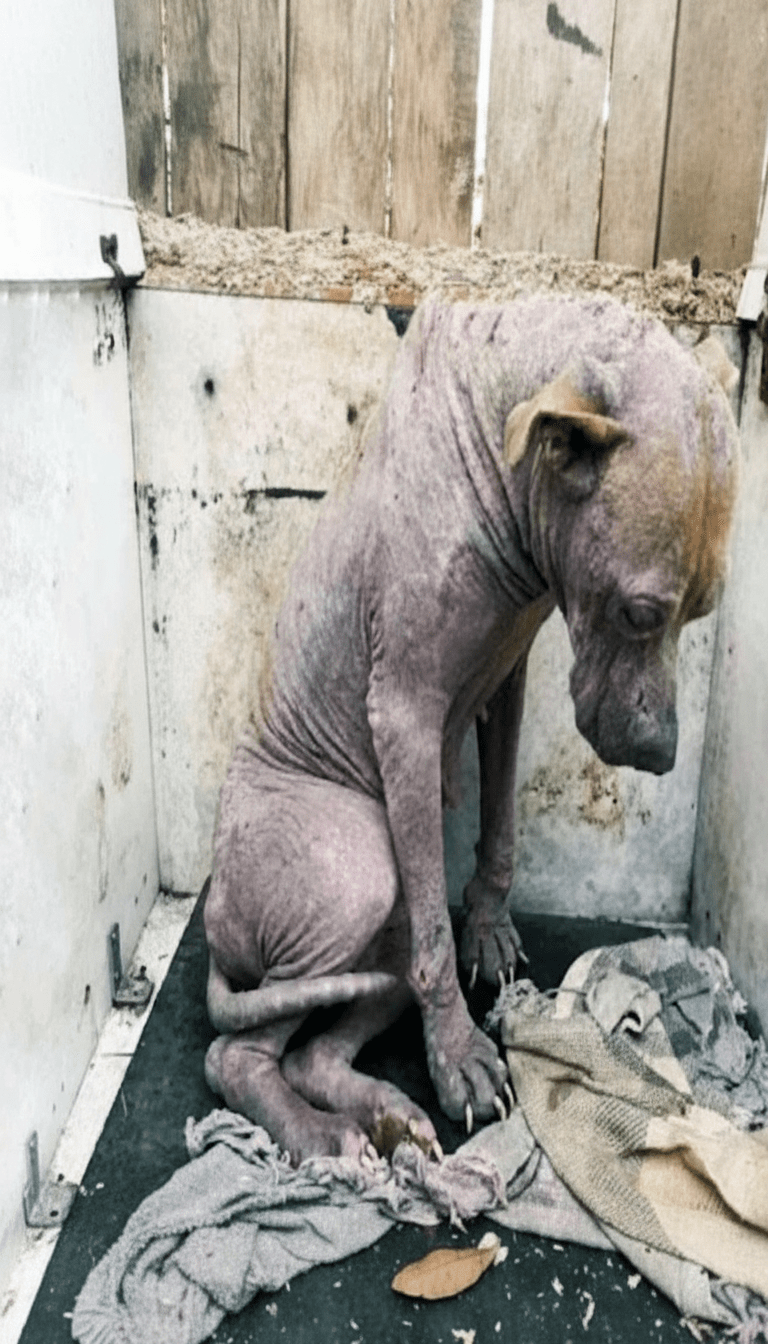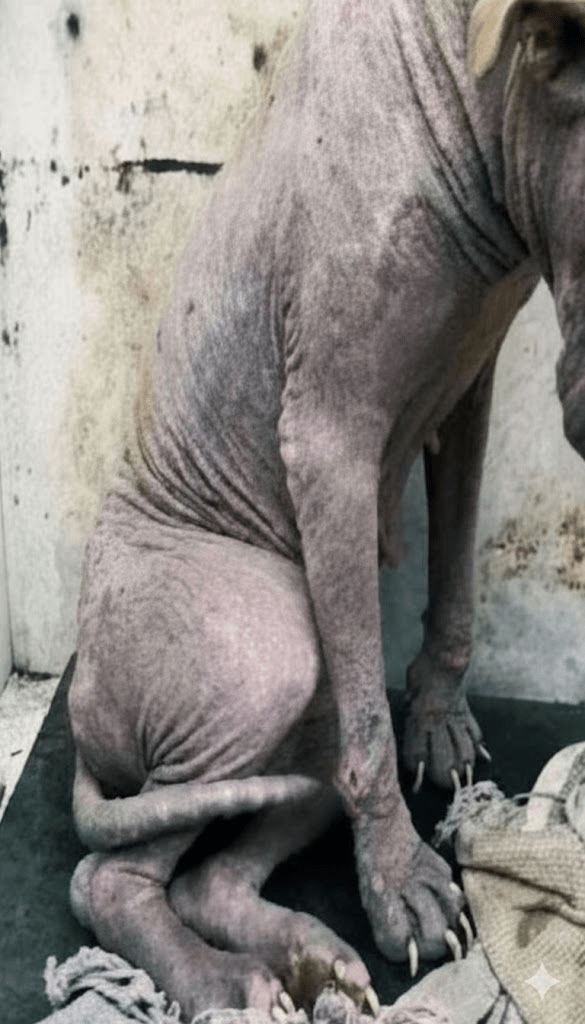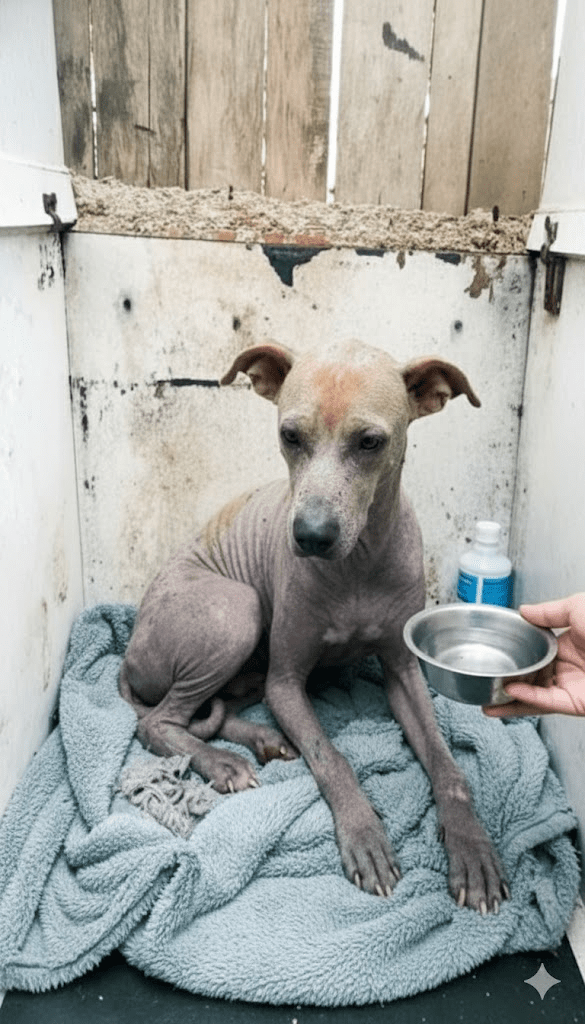The image before us is a stark, poignant portrait of vulnerability. A dog, stripped bare of its fur, its skin a canvas of hardship, sits hunched in what appears to be a small, confining space. Its posture speaks volumes: a bowed head, a defeated slump, conveying a profound sense of sadness and abandonment. This is not just a picture; it is a silent plea, a testament to the suffering that countless animals endure, often unseen and unheard. The raw honesty of this single frame compels us to look closer, to understand the story it tells, and to acknowledge the responsibility we bear towards these voiceless creatures. It challenges us to move beyond mere observation and to consider the actionable steps we can take to alleviate such distress and to foster environments where every animal can thrive, not merely survive. This image, while heartbreaking, also holds the potential to be a catalyst for change, a powerful symbol of the urgent need for compassion, intervention, and the enduring power of hope.

The plight of street animals, often mirroring the dire circumstances depicted in this image, is a global crisis. Millions of dogs and cats wander urban and rural landscapes, battling starvation, disease, injuries, and the harsh realities of extreme weather. They face the constant threat of vehicular accidents, deliberate cruelty, and the emotional toll of neglect. These animals, once perhaps cherished pets, are often abandoned due to financial hardship, behavioral issues, or simply a lack of commitment from their owners. Once on the streets, their chances of survival dwindle significantly, transforming vibrant creatures into shadows of their former selves, desperately seeking food, shelter, and a shred of kindness. The systems in place to address this issue, such as overcrowded shelters and underfunded rescue organizations, are often stretched to their limits, struggling to cope with the sheer volume of animals in need.

A critical component of understanding animal suffering lies in recognizing the physical manifestations of neglect and disease. The dog in the image exhibits severe hair loss, a condition often indicative of mange, allergies, or other skin infections exacerbated by poor nutrition and a weakened immune system. Its emaciated frame suggests prolonged hunger, while the visible wounds hint at injuries sustained from fights, accidents, or abuse. These physical symptoms are not isolated incidents but rather interconnected indicators of a life devoid of proper care and veterinary attention. A lack of regular grooming, vaccinations, and deworming further compromises an animal’s health, making them susceptible to a myriad of preventable diseases. The costs associated with treating such conditions can be prohibitive for individuals or small rescue groups, further complicating the journey to recovery for these animals.

Beyond the physical, the emotional and psychological scars of abandonment are equally devastating. Animals, particularly dogs, are highly social creatures that thrive on companionship and routine. When cast aside, they experience profound loneliness, fear, and confusion. The constant struggle for survival on the streets can lead to heightened anxiety, aggression, or, as seen in the image, a deep sense of resignation and depression. Rebuilding trust in humans becomes a long and arduous process, requiring immense patience, understanding, and consistent positive reinforcement. Many rescue organizations employ specialized behavioralists and trainers to help these animals overcome their past traumas, slowly guiding them back towards a state of emotional well-being and readiness for adoption into loving homes.

Effective strategies for combating animal cruelty and neglect require a multi-faceted approach. Education plays a pivotal role, raising awareness about responsible pet ownership, the importance of spaying and neutering to control overpopulation, and the legal consequences of animal abuse. Community outreach programs can provide affordable veterinary care and food assistance to pet owners facing financial difficulties, thus preventing abandonment. Robust animal welfare laws, coupled with stringent enforcement, are crucial in deterring cruelty and ensuring perpetrators are held accountable. Furthermore, supporting animal shelters and rescue organizations through donations, volunteering, and fostering provides essential resources for the rehabilitation and rehoming of neglected animals.







